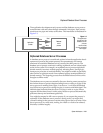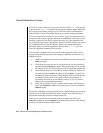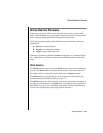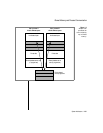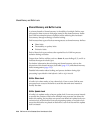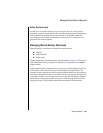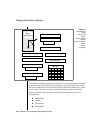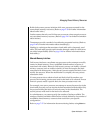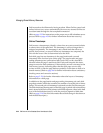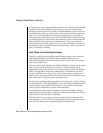
System Architecture 2-39
Managing Shared-Memory Resources
Buffer Exclusive Lock
A buffer is in exclusive mode, or has an exclusive lock, if a user process
demands exclusive access to the buffer. All other user processes requesting to
lock the buffer are placed on the user wait list for this buffer. When the
executing process is ready to release the exclusive lock, it wakes the next
process in the wait-list queue.
Managing Shared-Memory Resources
Shared memory is commonly divided into three sections:
■ Header
■ Internal tables
■ Buffer pool
These components of shared memory are illustrated in Figure 2-5. The size of
OnLine shared memory, expressed in kilobytes, is displayed in any tbstat
output header.
In the broadest sense, shared-memory resources can be thought of as the set
of all entries in the shared-memory internal tables and page buffers. For
example, when a user process needs access to shared memory, it must acquire
an entry in the shared-memory user table. When a user process needs access
to an OnLine table, it must acquire an entry in the shared-memory tblspace
table. When a user process needs access to an OnLine page buffer, it must
acquire the entry in the buffer header table associated with that buffer.



